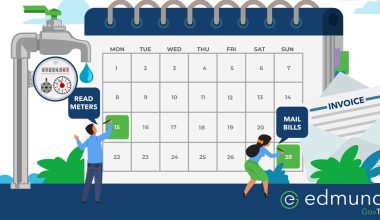If you’ve been reading our blog since the early days, you know I’ve written about days of exposure in one of the earliest issues and revisited it again three years ago.
I feel like this is an important enough topic to not only write about it again, but to also create a tool so you can calculate your days of exposure. First, let’s review how days of exposure are calculated…
Components of days of exposure
Days of exposure is the total number of days of service a customer ends up owing for if they are cut off for non-payment and never reinstate service. It takes into account six specific time periods:
- Days between meter readings
- Days until bills are mailed
- Days until due date
- Days until bills are delinquent
- Days until final notice is mailed
- Days until cut-off
The sum of these six values results in days of exposure. Dividing days of exposure by the number of days in the billing period (days between meter readings) yields periods of exposure. Multiplying the periods of exposure by the average residential utility bill and then subtracting the security deposit arrives at the potential bad debt write-off (or deposit refund if the security deposit is adequate).
In my experience, taking steps to reduce days of exposure is an exercise that would benefit nearly all utilities.


